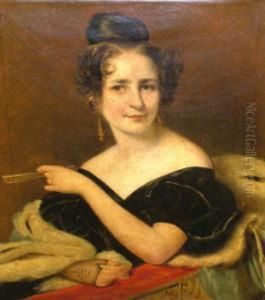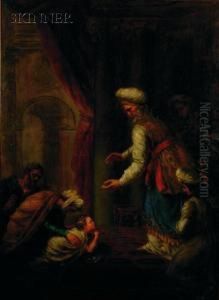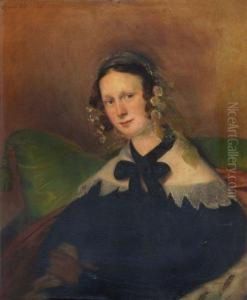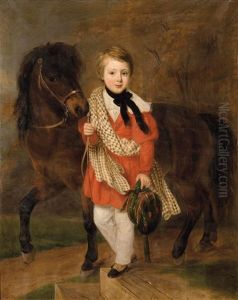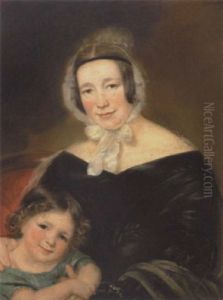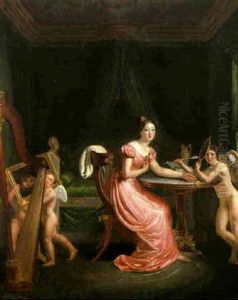Louis Pierre Spindler Paintings
Louis Pierre Spindler, born in 1846 and passing away in 1918, was a notable French painter whose artistic journey spanned the latter half of the 19th century and the early 20th century, a period rich in artistic evolution and experimentation. Spindler's work, primarily rooted in the traditions of landscape and portrait painting, reflects the transitional nature of European art during a time when the Impressionist movement was beginning to leave its indelible mark on the art world.
Spindler was born into a France that was undergoing significant social, political, and cultural transformations. The aftermath of the 1848 Revolution, the Second Empire under Napoleon III, and the eventual establishment of the Third Republic in 1870 provided a turbulent backdrop for Spindler's early life and artistic training. He was educated in the fine arts at a time when the Académie des Beaux-Arts exerted a strong influence over artists' training and careers, promoting classical standards of beauty, technique, and subject matter. However, like many of his contemporaries, Spindler found himself drawn to the emerging Impressionist movement, which sought to break away from these rigid conventions.
Despite the allure of Impressionism, Spindler's work remained somewhat conservative, straddling the line between the academic traditions he was trained in and the innovative approaches to color, light, and subject matter that characterized the work of Impressionists like Claude Monet and Pierre-Auguste Renoir. His landscapes and portraits often exhibit a keen attention to detail and a commitment to realism, yet with a subtlety of palette and light that suggests an awareness of the changing trends in art.
Throughout his career, Spindler exhibited his work in various salons and galleries, gaining recognition among his peers and the public. While he may not have achieved the same level of fame as the leading figures of the Impressionist movement, his contributions to French art were nonetheless significant. His paintings offer a window into the transitional period of the late 19th and early 20th centuries, embodying the tension between tradition and innovation that defined the era.
Louis Pierre Spindler's legacy, however, extends beyond his paintings. By navigating the challenging waters of his time's artistic debates, he left behind a body of work that continues to be studied and appreciated for its unique place within the broader narrative of French art history. His death in 1918 marked the end of a career that mirrored the complexities and contradictions of a fascinating period in art, capturing the beauty of the world around him while engaging with the ever-evolving dialogue on how that world should be represented in art.
